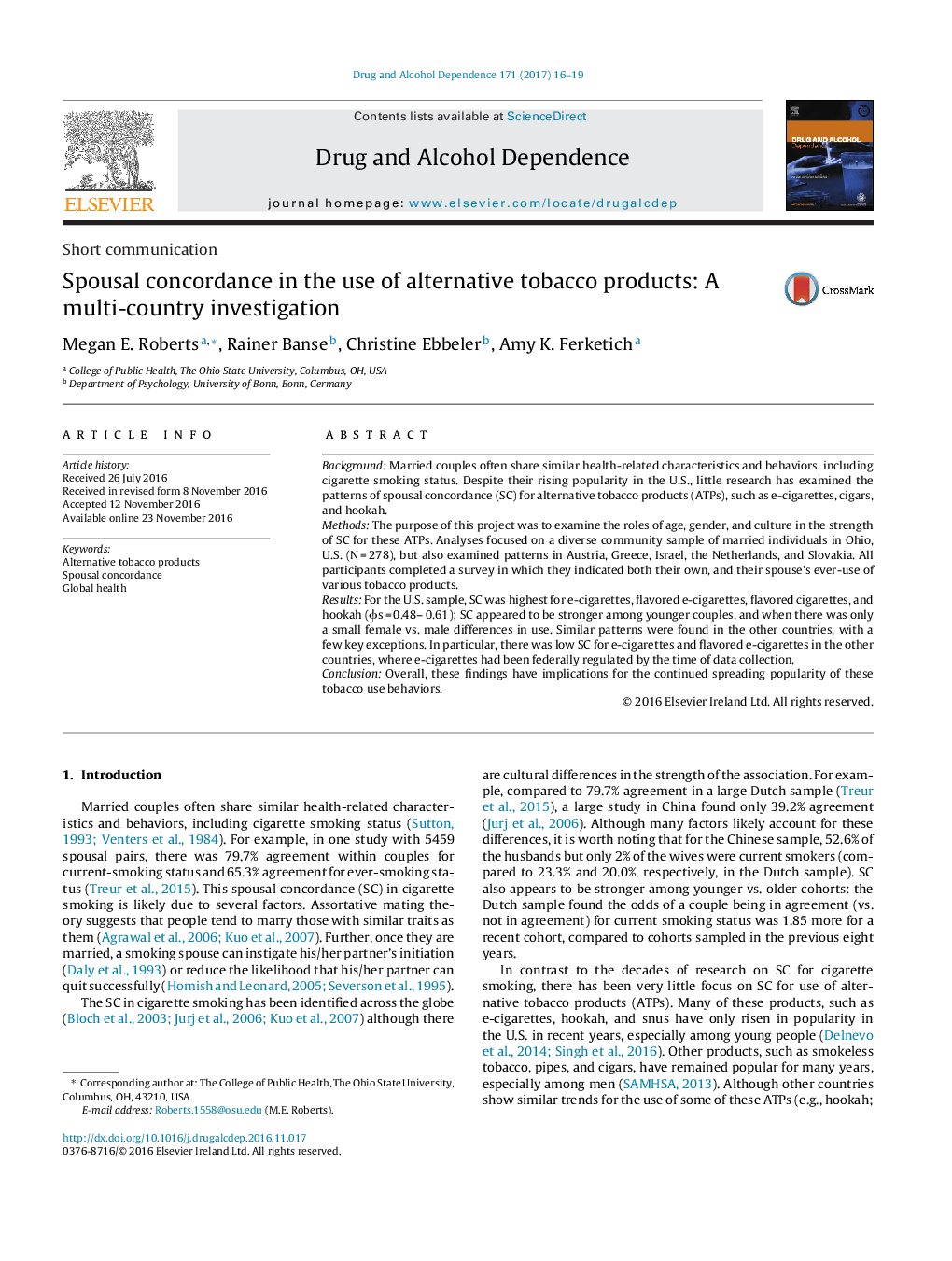| Article ID | Journal | Published Year | Pages | File Type |
|---|---|---|---|---|
| 5120202 | Drug and Alcohol Dependence | 2017 | 4 Pages |
â¢Little research has examined spousal concordance for alternative tobacco products.â¢US spousal concordance was highest for e-cigs, flavored e-cigs and cigs, and hookah.â¢US spousal concordance was stronger among younger couples.â¢Other countries showed low spousal concordance for e-cigs and flavored e-cigs.â¢Findings have implications for the increasing popularity of these behaviors.
BackgroundMarried couples often share similar health-related characteristics and behaviors, including cigarette smoking status. Despite their rising popularity in the U.S., little research has examined the patterns of spousal concordance (SC) for alternative tobacco products (ATPs), such as e-cigarettes, cigars, and hookah.MethodsThe purpose of this project was to examine the roles of age, gender, and culture in the strength of SC for these ATPs. Analyses focused on a diverse community sample of married individuals in Ohio, U.S. (N = 278), but also examined patterns in Austria, Greece, Israel, the Netherlands, and Slovakia. All participants completed a survey in which they indicated both their own, and their spouse's ever-use of various tobacco products.ResultsFor the U.S. sample, SC was highest for e-cigarettes, flavored e-cigarettes, flavored cigarettes, and hookah (Ïs = 0.48- 0.61); SC appeared to be stronger among younger couples, and when there was only a small female vs. male differences in use. Similar patterns were found in the other countries, with a few key exceptions. In particular, there was low SC for e-cigarettes and flavored e-cigarettes in the other countries, where e-cigarettes had been federally regulated by the time of data collection.ConclusionOverall, these findings have implications for the continued spreading popularity of these tobacco use behaviors.
